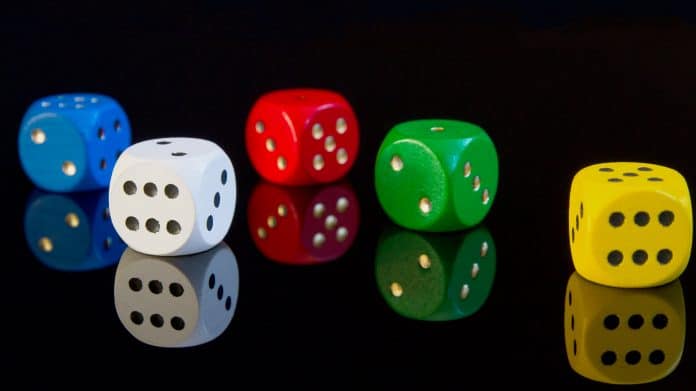The influence of numerous columns published in popular newspaper supplements where so-called “experts” shower us with all kinds of advice is not to be underestimated. These columns do not only form people’s opinions and change habits of entire nations; every once in a while they can also provoke large-scale polemics involving wider audiences as well as more professional circles. In the area of health and nutrition such fervent reactions are to be expected, but it is a completely different thing when they are brought about by a mathematical question.
Two goats and a car
Parade magazine, which is distributed as a supplement of more than four hundred American newspapers every Sunday and reaches around seventy million readers, has long featured a column called “Ask Marilyn”. It is edited by Marilyn vos Savant who became famous in the 1980s when she was listed in the Guinness Book of World Records for the highest IQ on the planet. In her column, she has been answering various questions and solving problems posed by readers for more than twenty years.
Among all the questions she has ever dealt with, a special place belongs to a seemingly very simple problem which was posed to her on September 9, 1990 by a Mr. Craig F. Whitaker: “Suppose you’re on a game show, and you’re given the choice of three doors. Behind one door is a car, behind the others, goats. You pick a door, say #1, and the host, who knows what’s behind the doors, opens another door, say #3, which has a goat. He says to you, “Do you want to pick door #2?” Is it to your advantage to switch your choice of doors?”
The question became known as “the Monty Hall problem”, after the host of the popular American television show Let’s Make a Deal in which the host Monty Hall challenged his guests to accept or refuse different offers he made. In her column, Marilyn answered her reader that it would definitely be wiser to switch doors because the probability to win the car would increase by two times. This was her answer: “Yes; you should switch. The first door has a 1/3 chance of winning, but the second door has a 2/3 chance. Here’s a good way to visualize what happened. Suppose there are a million doors, and you pick door #1. Then the host, who knows what’s behind the doors and will always avoid the one with the prize, opens them all except door #777,777. You’d switch to that door pretty fast, wouldn’t you?”
Could the most intelligent woman in the world be wrong?
Of course, all of this would have gone unnoticed if it had not provoked a storm of critics aimed at Mrs. vos Savant. Parade magazine received more than ten thousand letters sent by outraged readers among which a great many were teachers of mathematics. Nearly one thousand letters were signed with names followed by a PhD and numerous letters were written on sheets of paper bearing the titles of renowned American universities (many of these letters are available on Marilyn’s website: www.marilynvossavant.com). All the critics agreed that Marilyn was misleading readers with her answer, because the probability of winning could not be changed by choosing the other door. One professor of mathematics was very blunt: “You blew it, and you blew it big! … As a professional mathematician, I am very concerned with the general public’s lack of mathematical skills. Please help by confessing your error and in the future being more careful.” Another was so upset that he ended up calling Marilyn herself a goat.
The argument quickly spread across the limits of the Sunday magazine and even landed on the cover of The New York Times, and some well-known names from the world of mathematics joined the debate. This is how a reporter described the atmosphere created by vos Savant’s explanation: “Her suggestion to switch the doors has been the subject of debate in the corridors of the CIA as well as on Air Force bases by the Persian Gulf. It has been analyzed by mathematicians from the MIT and computer programmers of the Los Alamos laboratories in New Mexico.” Apart from the offensive letters which denounced her response, Marilyn did receive some letters of approval. Among others, one came from a professor at the prestigious MIT: “You are indeed correct. My colleagues at work and I had a ball with this problem, and I dare say that most of them, including me at first, thought you were wrong!”
Marilyn was not discouraged by the critics – after all, she was objectively proven to be smarter than all her critics in terms of her IQ – and in one of her following columns she gave teachers across the country the task to play this simple game with their students in class (without real goats and cars, obviously) and send her their results. She later published these results and they were completely consistent with her advice that in the case in question, it was actually wiser to choose the other door.
Who’s right?
The debate brought about by the Monty Hall problem falls into the category of what mathematicians call conditional probability. Simply put, this is a branch of mathematics dealing with the question of adapting the probability of an event taking place when new data enters the equation. The essence of the problem which provoked such a widespread and emotionally charged reaction from readers was that most overlooked a crucial piece of information. It is very important to take into consideration the fact that the game-show host already knows which door hides the car.
In the second part of the challenge when the host opens the door which hides the goat, he already knows that there is no car behind this door. If the host did not possess this knowledge and was to open the doors completely at random- as the contestant must– the probability of guessing correctly really would not be increased by changing the decision. In this case, the more than one thousand readers who had concluded that Marilyn was not familiar with the basics of mathematics and sent angry letters to the magazine would have been right. Our mathematical intuition suggests that the probability that the car is behind one or the other door when two of the doors are still closed remains equal. This would of course be true, if there were not for the host who knows more than we do.
This problem is most easily clarified, if we take a look at the action from behind the scenes where we can see which door hides the car and which hides the goats. If the contestant guesses where the car is in his first try, the host will open any of the other two doors in which case it is unwise for the contestant to change his decision. However, this only applies if the contestant chooses the door which hides the car in his first try for which the probability is 1:3 or approximately 33 %. But if in his first try the contestant chooses the door which hides a goat, the host will have to open the only remaining door which hides the other goat. In this case, the contestant would be wise to switch the doors because that would certainly win him the car.
If the contestant chooses the goat in his first try it is always to his advantage to switch doors while this does not apply if he chooses the car. The probability that he will choose the goat in his first try is 2:3 while the probability that he will choose the car is only 1:3. If the contestant follows the tactic of switching doors, the probability of winning the car is 2:3; if he refuses to switch doors the probability decreases by half and is only 1:3.
If the contestant chooses to switch doors when the host offers him the chance, he will win the car every time when he chooses the goat on his first try. This choice will win him the car in twice as many cases as it would if he decides not to switch. The probability of guessing correctly increases from 33% to 66%.
If you are having difficulties understanding this right now, do not worry. Many mathematicians needed quite some time to clarify the issue.
Let us conclude with a similar puzzle that you can try to solve yourselves: a family with two children has at least one boy. What is the probability that it also has a girl if we presume that on average an equal number of boys and girls are born? Of course, the correct answer is not 50%.






